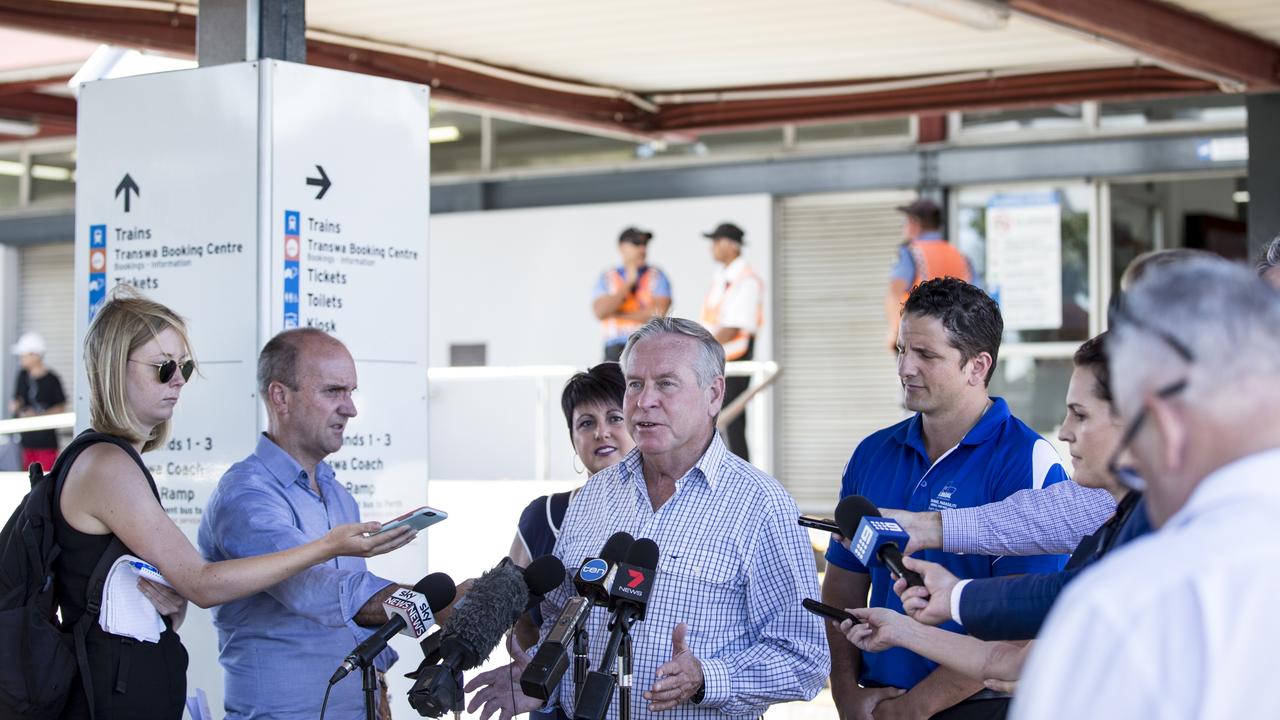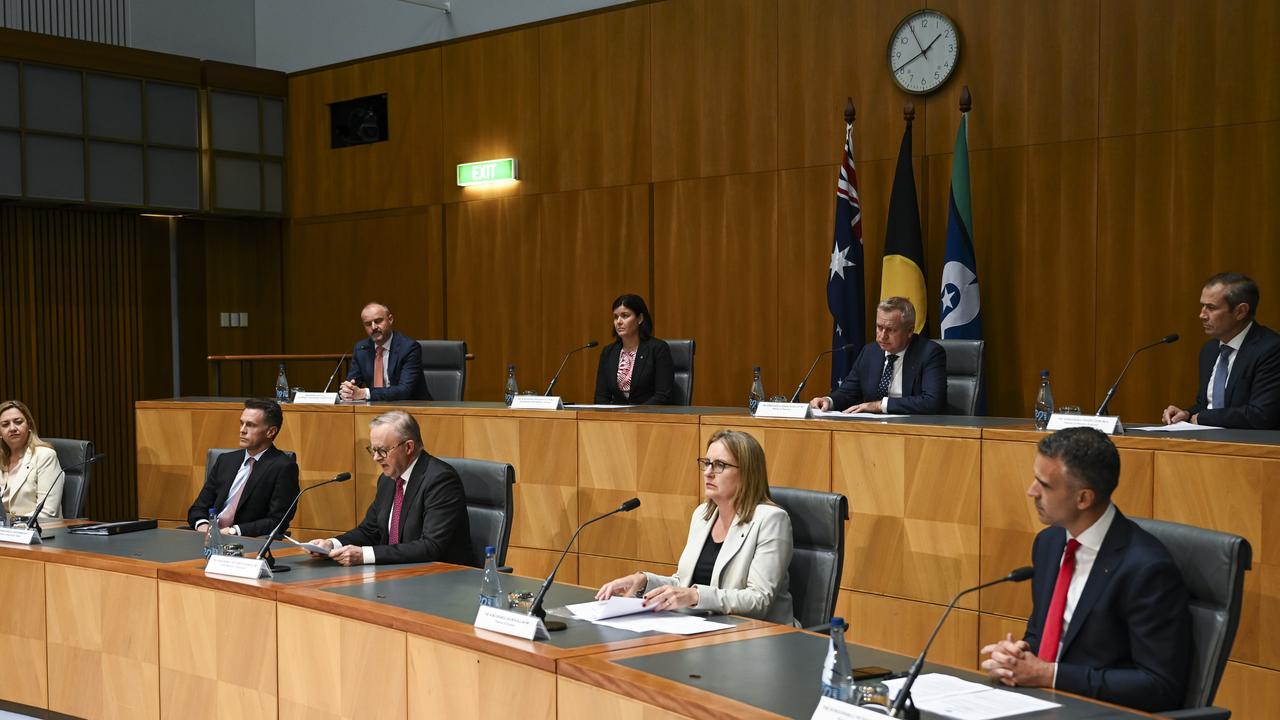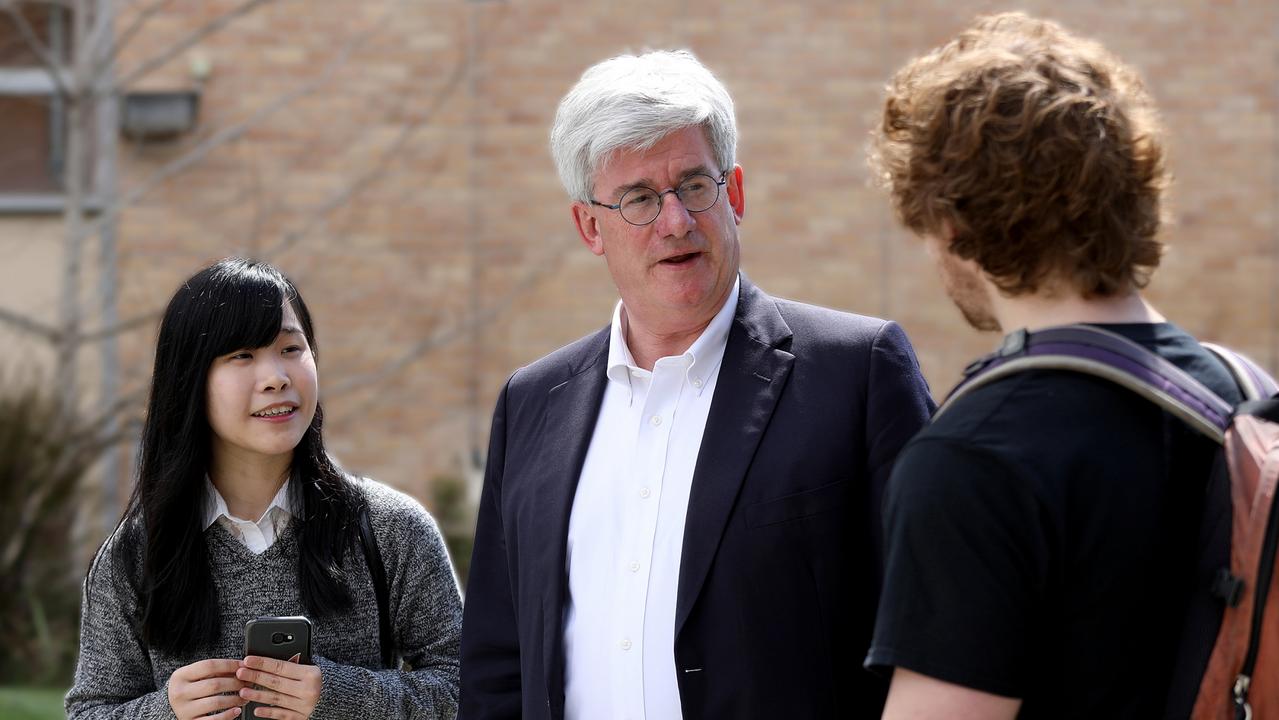‘Failing’ GST distribution should be carved-up by population, ex-WA premier Colin Barnett demands
Under a controversial proposal to divide up the GST take between the states, NSW, Victoria and Queensland could be left billions of dollars worse off.
A controversial carve-up of the country’s GST revenue should be scrapped altogether under a radical plan that would give Western Australia an even bigger slice of the $89.5bn pie, while cumulatively leaving Victoria, NSW and Queensland billions of dollars worse off.
Even as WA is expected to rake in billions of dollars due to GST distribution rules next financial year, the state’s former Liberal premier Colin Barnett on Wednesday argued that the current system was “failing”, and had been since the mining boom cut his state’s share.
Instead, he proposed that 90 per cent of the GST revenue raised should be distributed to the states and territories relative to the size of their population.

The remaining 10 per cent would then be apportioned by the federal government on a “needs basis”, with smaller and poorer states and the territories to reap the lionshare of the funding.
“In other words, you do not have to play around with the whole $90bn,” Mr Barnett told the National Press Club.
“Just play around with the $10bn and do it properly and do it simply. And that is a pragmatic solution.”
Western Australia is due to receive approximately $7.3bn next financial year from Australia’s $89.5bn GST pool, according to the Commonwealth Grants Commission.
Distributing GST revenue via Mr Barnett’s proposal would bolster the resource-rich state’s budget even more, adding at least $8.7bn next financial year to its bottom-line.
However, the measure would leave the largest states far worse-off.
Queensland would receive $16.4bn, $1.1bn lower than current estimates, while NSW would face a $1bn shortfall on its expected distribution, receiving $25.2bn.
Victoria would suffer the biggest shortfall, reaping $20.6bn next financial year, $1.6bn worse off than expected.
The impact on the smaller states and territories is unclear as their funding would rely on how the 10 per cent funding pool was distributed.

The current GST carve-up, which apportions GST revenue via an opaque and convoluted process which accounts for state’s revenue raising ability and spending needs, has attracted heated criticism from Australia’s eastern states who claim they have been dudded while WA’s delivers consecutive surpluses.
After WA’s GST share collapsed thanks to soaring commodity royalties, the Turnbull government guaranteed a floor of 70c of every dollar of GST raised in the state from mid-2019 in an attempt to sandbag seats.
The floor is scheduled to rise to 75c from July 1 this year.
Under the agreement, states and territories were also placated with top-up payments so that they were “no worse off” from the guarantee of WA’s GST share. The payments are expected to cost $39bn over the decade to mid-2029, much of which would be avoided if GST was distributed on a per-capita basis.
But with the Albanese government ruling out tinkering with the GST, Mr Barnett said his state’s GST floor should not be raised from July 1.
“You do not need to raise the floor as Anthony Albanese has said. Currently it is 70 cents and it does not need to be 75 cents as it is due to,” Mr Barnett said.
“That just exacerbates some of the situation.”

Also speaking at Press Club, independent economist Saul Eslake said electoral interests had “corrupted” the biggest line item in the federal budget.
“Over the longer term, the result of the changes made in 2018 will be that residents of Australia’s richest state will come to a better public services and lower state taxes than other Australians,” Mr Eslake said.
“I think this is … un-Australian.”
With states and territories bar WA persistently running deficits post-pandemic, separate analysis released by global ratings agency S&P earlier this week advocated for an overhaul of the GST to support stretched state budgets.
While S&P admitted that GST reform would be a “bitter pill”, it argued that increasing the tax, broadening its scope or a combination of both, would vastly reduce the debt and borrowing needs of the states and territories.
Removing GST exemptions from food, education, and financial services, would raise $17.8bn next financial year, while increasing the rate from 15 per cent, up from its current 10 per cent rate, would add a further $30.5bn to state coffers, the analysis finds.
A combination of both measures would buoy cash-strapped state budgets by $54.2bn next financial year.
“If GST is left untouched, we forecast gross debt to reach 146 per cent of operating revenues by 2026 from just 83 per cent in 2019,” the analysis warned.
More Coverage
Originally published as ‘Failing’ GST distribution should be carved-up by population, ex-WA premier Colin Barnett demands







